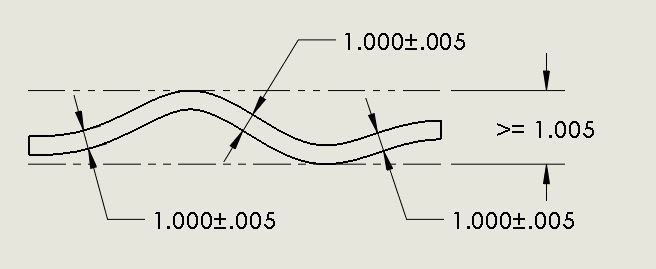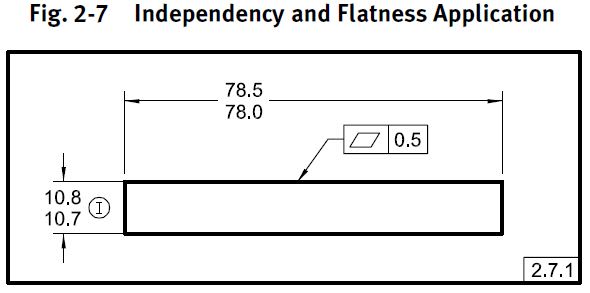Is there a way to indicate that the envelope principle should not apply when defining the thickness of a flexible part, for example a gasket made of a flexible rubber sheet?
This is how the part should be allowed to look like this when not constrained:

But on the drawing (and if installed) it should look somewhat like this

In ISO this would be an easy thing to define but with ASME Y14.5 invoking the envelope principle by default it seems to be impossible...
This is how the part should be allowed to look like this when not constrained:

But on the drawing (and if installed) it should look somewhat like this

In ISO this would be an easy thing to define but with ASME Y14.5 invoking the envelope principle by default it seems to be impossible...


